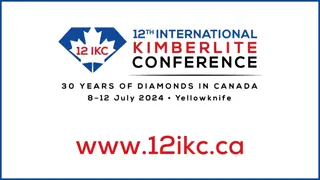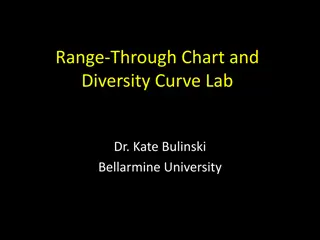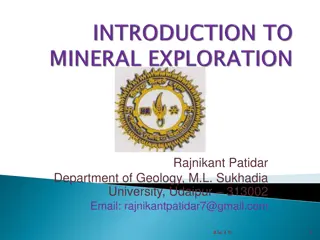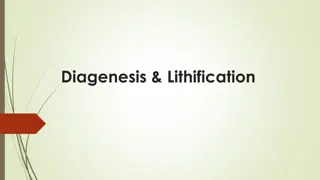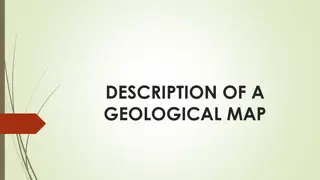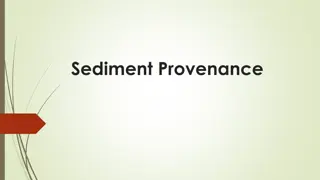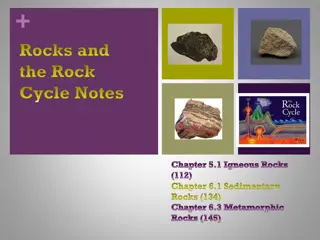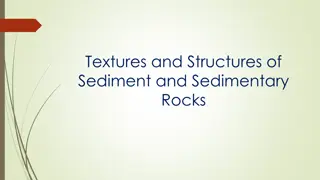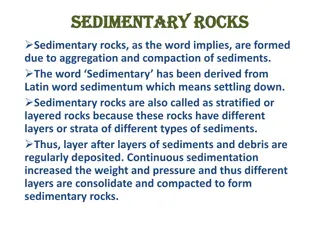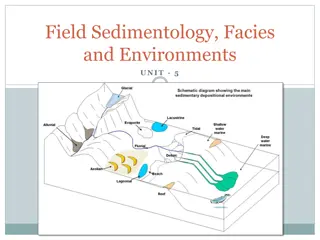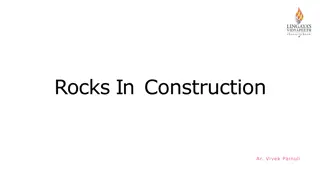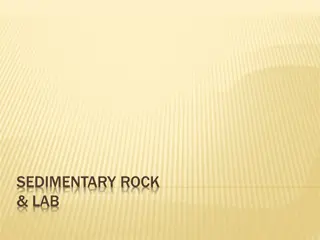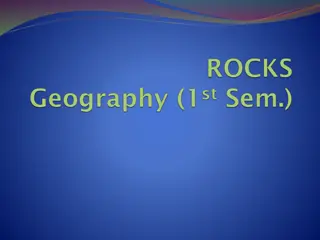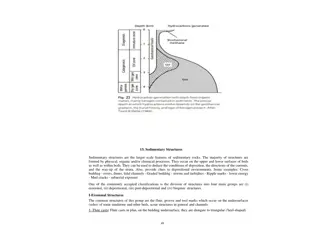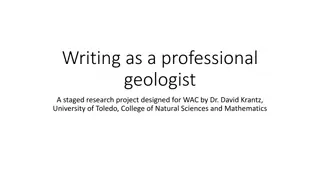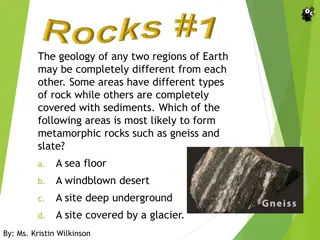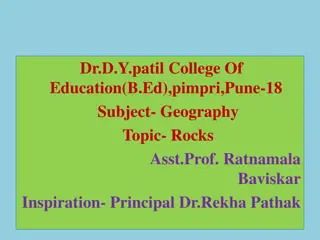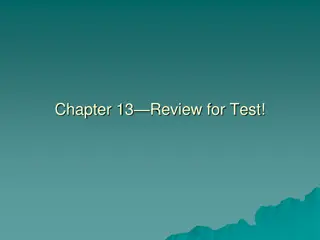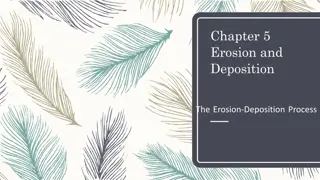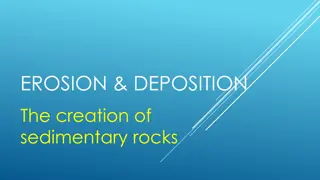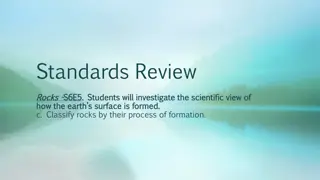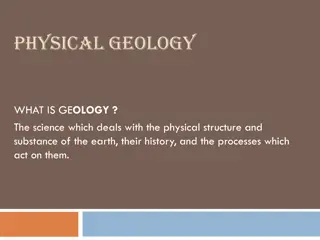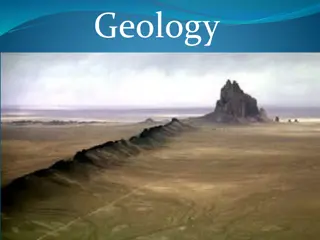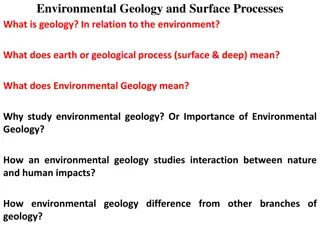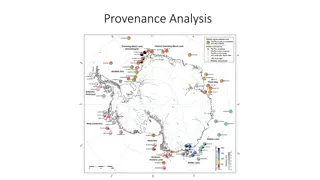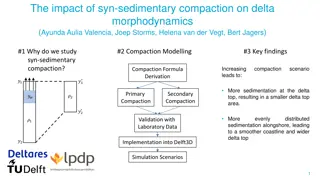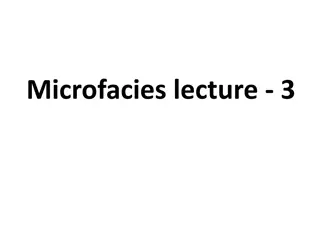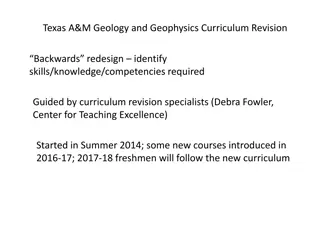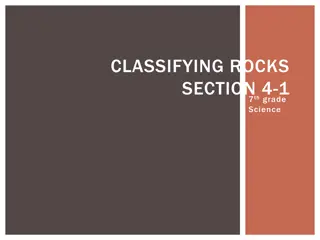Geology of Ogun State, Nigeria: Insights and Implications
The geology of Ogun State in southwestern Nigeria, particularly within the Dahomey or Benin Basin, holds significant value for understanding the region's origins and geological evolution. This includes insights on sedimentary basins, the Wilson Cycle, and the unique characteristics of the Dahomey or
3 views • 35 slides
Engineering Geology for a Habitable Earth: Presentation at XIV IAGEE Congress
Presenting at the XIV Congress of the International Association for Engineering Geology and the Environment on the topic of Engineering Geology for a Habitable Earth. The presentation covers the background of the project, methodology used, results obtained, and conclusions/recommendations drawn. Tip
7 views • 8 slides
Insights from the International Kimberlite Conference on Diamonds and Geology
Delve into the world of diamond mining and geology with a focus on Kimberlites. Explore topics such as diamond deposits exploration, mantle petrology, and economic geology presented by experts in the field. Discover the origins and evolution of Kimberlites, advancements in prospecting techniques, an
6 views • 8 slides
Geology Unit Review
This geology unit review covers identifying different processes such as uplift, subduction, and convection, as well as types of volcanoes like cinder cones and composite volcanoes. It also discusses the Pacific Plate and its unique characteristics, along with volcanic activity around the Ring of Fir
2 views • 9 slides
Medical Geology and Environmental Health Studies at Western Oregon University
Explore the interdisciplinary field of Medical Geology at Western Oregon University, covering topics such as environmental exposure, geological impacts on nutrition, geologic hazards, and water quality. Discover how the Earth's subsystems interact and affect human health, with a focus on pathways of
1 views • 12 slides
Understanding Fossil Diversity in Geology Labs
Explore the world of fossils and geological time scales in a Geology for Non-Science Majors lab under Dr. Kate Bulinski at Bellarmine University. Understand major paleontological events, diversifications, mass extinctions, and groups of organisms while learning to graph in Microsoft Excel.
0 views • 21 slides
Understanding Minerals, Rocks, and Ores in Geology Studies
Exploring the world of geology, this content delves into minerals as inorganic substances with specific compositions, rock formations of various origins, and ore classifications encompassing metallic, noble, industrial, gemstone, and fuel resources. It covers the definitions, characteristics, and cl
0 views • 19 slides
Understanding Diagenesis and Lithification in Sedimentary Rocks
Diagenesis and lithification are crucial processes that transform loose sediment into solid rock through compaction and cementation. Diagenesis involves various chemical, physical, and biological changes while lithification involves the pressure-induced consolidation of sediment. Compaction removes
0 views • 15 slides
Understanding Geological Maps: Interpretation and Description
Training in geological map interpretation aims to accurately identify features depicted on maps through careful examination of geological information. The description of a geological map involves a chronological synthesis of geological data, analysis of the geology of an area focusing on relief, suc
0 views • 15 slides
Understanding Sediment Provenance in Geology
Sediment provenance in geology involves reconstructing the origin of sediments through compositional analyses to determine erosion history and geographical origins. It helps characterize the journey of sediments from source to sink, providing insights into tectonic and paleoclimatic histories. Prove
1 views • 11 slides
Understanding the Rock Cycle: Igneous, Sedimentary, and Metamorphic Rocks
This educational material covers the formation and characteristics of Igneous, Sedimentary, and Metamorphic rocks. It includes details on the processes involved, such as heat melting rocks into magma, sediment formation through erosion and deposition, and the differentiation between intrusive and ex
1 views • 16 slides
Understanding Sediment and Sedimentary Rock Textures
Discover the textures and structures of sediment and sedimentary rocks, including clastic and crystalline textures, primary and secondary textures, and the effects of compaction. Learn about sediment texture, differences in sedimentary rock texture, and the classification of grain sizes using the We
1 views • 20 slides
Insights into the Siwaliks: Geography, Geology, and Climate
Siwaliks, part of the Himalayan range, hold a rich geological history with unique landscapes and diverse flora and fauna. Stretching from Bhutan to Pakistan, these mountains boast a variety of rock layers, surrounding rivers, and distinct climates. The region's straitigraphy and geology mark it as a
1 views • 34 slides
Formation and Characteristics of Sedimentary and Metamorphic Rocks
Sedimentary rocks are formed through the aggregation and compaction of sediments, while metamorphic rocks result from changes in the form or composition of existing rocks. Sedimentary rocks contain layers of different sediments and are abundant on Earth's surface, while metamorphic rocks undergo met
0 views • 7 slides
Understanding Resistivity Measurements in Geology
Explore the concept of resistivity measurements in geology, focusing on electrode configurations such as Wenner and Schlumberger arrays. Learn about the potential differences in electrode setups and how to calculate apparent resistivity through geometrical factors. Various electrode arrangements and
0 views • 22 slides
Understanding Earth's Geology: Chapter 6 Clicker Questions
Chapter 6 of the Earth's geology covers various topics including the melting associated with the addition of carbon dioxide or water to rocks, types of magma based on silica content, descriptions of hot mafic magma, and characteristics of pyroclastic flows in volcanoes. Test your knowledge with thes
0 views • 11 slides
Field Sedimentology: Methods and Tools for Sedimentary Studies
Sedimentology involves interpreting sediments and rocks in terms of transport and deposition processes, distribution in space and time. Field studies require basic equipment like a notebook, hand lens, compass, clinometer, hammer, and GPS. Palaeocurrent indicators provide evidence of flow direction
0 views • 28 slides
Importance of Rocks in Construction and Building Materials
Rocks play a crucial role in construction as geological materials for foundations and building structures. They are classified into igneous, sedimentary, and metamorphic categories based on their composition and properties. Traditional stone masonry is being replaced by modern techniques like stone
1 views • 15 slides
Understanding Sedimentary Rocks and Their Formation
Explore the world of sedimentary rocks through detailed descriptions and images. Learn about the formation process involving sediment deposition, lithification, and the various types of sedimentary rocks such as conglomerate, sandstone, shale, and more. Discover how organic sedimentary rocks like co
0 views • 20 slides
Understanding Different Types of Rocks and How They Form
Rocks are essential components of Earth's crust, consisting of various minerals held together by natural cement. They can be categorized into three groups: Igneous, Sedimentary, and Metamorphic rocks. Each group is formed differently, either through volcanic activity, sedimentation, or existing rock
3 views • 16 slides
Understanding Rocks and Minerals: Types and Formation
Rocks and minerals are natural substances with distinct characteristics. Rocks are solid aggregates of minerals or mineraloids, while minerals are naturally occurring chemical compounds. There are three main types of rocks: igneous, sedimentary, and metamorphic, each formed through different process
0 views • 16 slides
Sedimentary Structures: Types and Significance
Sedimentary structures are features found in sedimentary rocks that provide valuable information about the conditions of deposition, current directions, and depositional environments. They can be erosional, depositional, post-depositional, or biogenic in nature, with examples including flute casts,
0 views • 6 slides
Professional Geologist Research Project in Geology Courses
Staged research project for WAC by Dr. David Krantz at the University of Toledo, focusing on sedimentology and stratigraphy in geology courses. Includes WAC approaches, self-reflection tasks, and writing exercises related to stratigraphy and the environmental sciences. Examples and writing tasks lik
0 views • 18 slides
Understanding Earth's Geology and Rock Formation
Earth's geology varies across regions, with distinct rock types like metamorphic rocks found in particular environments. Learn about the characteristics of rocks, the properties of different rock types, and the impact of human activities on the rock cycle.
0 views • 7 slides
Understanding Rocks: Types, Formation, and Importance in Geology
Rocks are solid accumulations of minerals found in the Earth's lithosphere. They are classified into igneous, sedimentary, and metamorphic types based on their mineral composition. Rocks play a crucial role as geological materials for construction and historical buildings. Learn about the properties
0 views • 31 slides
Geology Test Review: Rocks and Minerals
This review covers the identification of rocks as igneous, sedimentary, or metamorphic, along with definitions and properties of minerals like cleavage, crystal structure, streak color, and more. It also discusses the classification of rocks as foliated or nonfoliated. Prepare for your geology test
2 views • 112 slides
Understanding Erosion and Deposition Processes in Geology
Explore the dynamic forces of erosion and deposition in geology, from the constructive and destructive processes to weathering, erosion agents, rates of erosion, sorting of sediment, deposition, and different depositional environments where sediments settle. Delve into how factors like weather, clim
0 views • 12 slides
Understanding Erosion, Deposition, Weathering, and Mass Movement in Geology
Explore the processes of erosion, deposition, weathering, and mass movement in geology. Learn about how rocks are broken down and carried away, the different types of weathering, and the factors affecting these processes. Discover the role of gravity in erosion and the impact of chemical reactions o
0 views • 18 slides
Understanding Rock Formation and the Rock Cycle
Explore how the Earth's surface is formed through the classification of rocks based on their processes of formation. Learn about different rock types such as igneous, sedimentary, and metamorphic rocks, and understand concepts like the rock cycle and the effects of pressure on sedimentary rocks.
0 views • 13 slides
Evolution of Geoscience Education at Rutgers University
The Rutgers Geology Museum played a significant role in the development of geoscience education in the 19th and 20th centuries at Rutgers University. From the rise of geology in the United States to the establishment of geology courses at the university, key figures like George H. Cook and A.H. Ches
0 views • 12 slides
Exploring Careers in Geology: Opportunities and Pathways
Geology is the scientific study of the Earth's physical structure, substances, history, and processes. This field offers diverse career opportunities, from teaching and economic geology to environmental and engineering geology. Geologists play crucial roles in understanding natural hazards, explorin
0 views • 13 slides
Exploring the Fascinating World of Geology and Earth Sciences
Delve into the diverse field of geology, covering topics such as physical and historical geology, geochronology, mineralogy, petrology, and more. Learn about the solar nebula hypothesis and the Earth's lithosphere, hydrosphere, atmosphere, and biosphere. Discover the composition of Earth's atmospher
0 views • 12 slides
Understanding Environmental Geology and Surface Processes
Geology in relation to the environment involves studying Earth's geological processes, both surface and deep, and their impacts on nature and human activities. Environmental geology focuses on the interaction between humans and the Earth's near-surface environment, addressing hazards like erosion, f
0 views • 71 slides
Understanding Sedimentary Rock Characteristics: Provenance and Weathering
Explore the significance of provenance analysis in interpreting the origin of sedimentary rocks based on lithological characteristics. Learn about mechanical and chemical weathering processes, compositional and textural maturity, mineral stability during weathering, and how rock particles indicate t
0 views • 12 slides
Understanding Sedimentology: An Overview of Sedimentary Processes and Rocks
Sedimentology is the study of modern sediments like sand, mud, and clay, along with the processes involved in their deposition. Sedimentologists use this knowledge to interpret Earth's geologic history through sedimentary rocks and structures. Sediment plays a crucial role in enriching soil with nut
0 views • 27 slides
The Impact of Syn-Sedimentary Compaction on Delta Morphodynamics
This study examines the influence of syn-sedimentary compaction on delta development, particularly focusing on how compaction affects delta morphology. It addresses the lack of field measurements by proposing simulation models as an alternative approach to understanding the link between compaction a
0 views • 12 slides
Understanding Microfacies Analysis in Sedimentary Geology
This chapter discusses field work studies, sampling strategies, and laboratory methods essential for microfacies analysis. It emphasizes the importance of precise field records, vertical and lateral variations in sampling, and studying microscopic features along with mineralogical and geochemical da
0 views • 22 slides
Dispersed Organic Matter in Sedimentary Rocks - Review Paper for Geological Application Studies in the 21st Century
The WG on Dispersed Organic Matter in Sedimentary Rocks is working on a review paper focusing on application studies of dispersed organic matter (DOM) within a geological context. The paper aims to provide an insightful overview titled "Applications of Dispersed Organic Matter Petrology in the 21st
0 views • 18 slides
Texas A&M Geology & Geophysics Curriculum Revision and Development
Involving a backward redesign led by curriculum revision specialists, the Texas A&M Geology and Geophysics curriculum has been undergoing changes since 2014. The revision aims to identify the necessary skills, knowledge, and competencies for students. It includes new courses introduced in 2016-17, w
0 views • 5 slides
Understanding Rock Classification in 7th Grade Science
When studying rocks, scientists analyze their mineral composition, color, and texture. Rock-forming minerals play a significant role in Earth's geology, with granite and basalt being prime examples. The texture of rocks is determined by the size, shape, and pattern of grains present. Rocks form thro
0 views • 9 slides


